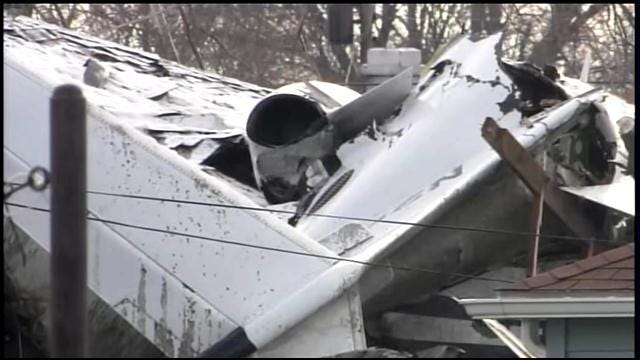NTSB: Airplane 'Lost All Power' Before Crash That Killed Steve Davis, Pilot
The plane carrying former OU quarterback Steve Davis and the owner and two employees of DigiCut in Tulsa had no engine power or hydraulics just seconds before it crashed in Indiana last month.Friday, April 5th 2013, 9:54 am
The plane carrying former OU quarterback Steve Davis and the owner and two employees of DigiCut in Tulsa had no engine power or hydraulics just before it crashed in Indiana last month.
3/19/2013: Related Story: Investigators Examine Plane Wreckage From Crash That Killed 2 Tulsa Men
The crash killed Davis as well as DigiCut owner Wes Caves. Two DigiCut employees, Jim Rodgers and Christopher Evans, survived the crash. Rodgers and Evans have been brought back to Tulsa where Evans is awaiting more surgery and Rodgers is still in the hospital.
4/2/2013: Related Story: Two Tulsa Survivors Brought Home Following Deadly Indiana Plane Crash
The National Transportation Safety Board has released its Preliminary Report on the crash of the Beechcraft Premier 1 jet.
According to the report, the flight had departed Jones Riverside Airport in Jenks at 1:58 p.m. on March 17, 2013.
Read the NTSB Preliminary Report on the crash.
The plane was flown by Wes Caves, 58. His friend Steve Davis, 60, who was also in the cockpit, was also a pilot.
At 4:10 p.m., the pilot made radio contact with South Bend, Indiana Approach Control while at an altitude of 11,000 feet. At 4:11 p.m., the flight was cleared to descend to 3,000 feet. At 4:15 p.m., the controller told Caves to make a slight turn to the left to line up with the runway and to report when he had the airport in sight.
At 4:15:07, according to the report, the pilot declared an emergency because of a lack of engine power, reporting that he was "dead stick" and without any power. "Dead stick" is pilot slang for landing with no engine power.
According to the NTSB, just 23 seconds later the pilot reported "we've lost all power, and we have no hydraulics."
The controller asked if the plane was controllable and the pilot reported "ah, barely controllable."
At 4:15:22, the pilot reported that the airplane's navigational systems were not operating and requested the controller help direct him to the airport so the controller told him it was nine miles straight ahead.
At 4:16:12, the controller told the pilot to turn 10 degrees left to land on runway 9R, which meant the airport's main east-west runway, and the plane would have been landing due east.
At 4:16:15, the pilot replied "26DK, turning left." The NTSB says no more voice communications were received from the airplane, even though the controller continued to give the pilot guidance.
At 4:18:58, the controller told the pilot to go around because the main landing gear was not extended. In fact, according to the report, only the airplane's nose landing gear was extended.
Controllers saw the plane climb and make a right turn to line up with runway 9R again. The airplane then made another landing approach.
Several witnesses told the NTSB the airplane bounced several times on the runway with only the nose gear extended before it ultimately entered a climbing right turn.
They say the airplane then entered a "nose low descent" into a nearby residential community.
The Preliminary Report is the first of three reports the NTSB will release on the crash. The second will be the Factual Report, which could take months or even years to release. It will be followed by the Probable Cause Report.
More Like This
March 22nd, 2024
March 14th, 2024
February 9th, 2024
Top Headlines
April 25th, 2024
April 25th, 2024
April 25th, 2024















